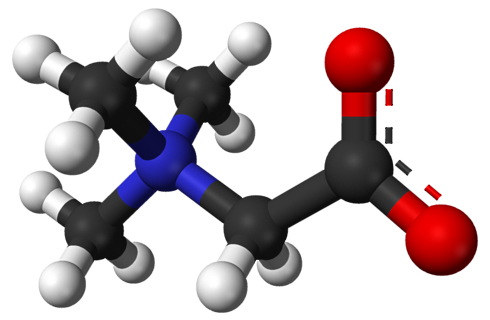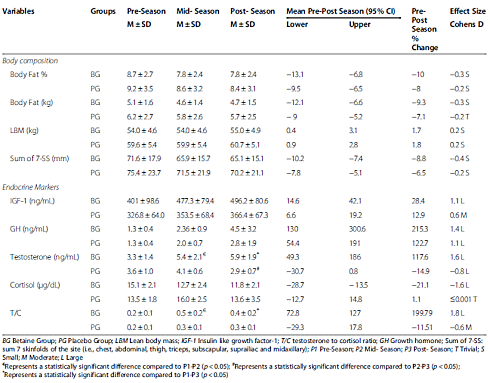A demanding training schedule can lower athletes' testosterone levels, which can compromise muscle recovery. Betaine supplementation may prevent this, according to a study in which young football players were used as test subjects.

Study
Hadi Nobari, from the Universidad de Extremadura in Spain, divided 29 young soccer players - their average age was 15 - into 2 groups. For 14 weeks, the players in one group took a placebo every day, while the players in the other group took a daily supplement that provided 2 grams of betaine.
The players in both groups had a similar training schedule.
Results
Betaine administration had no significant effect on the sports performance or body composition of the players. However, betaine did increase their testosterone level.
As the suplementation period progressed, testosterone levels in the placebo group [PG] dropped - probably as a result of the training. In the [BG] supplementation group, however, the testosterone level increased. Because testosterone stimulates muscle growth, this may mean that football players recover better in the longer term by supplementing with betaine.

Conclusion
"Betaine supplementation may be a useful nutritional strategy to offset the development of nonfunctional over-reaching state, marked by decrements in performance", writes Nobari.
"More research is necessary to determine if the increases in anabolic hormones are sustainable for longer than 14 weeks of supplementation, and if a longer supplementation period would translate to meaningful physiological adaptations."
Source:
J Int Soc Sports Nutr. 2021 Mar 4;18(1):20.

Study
Hadi Nobari, from the Universidad de Extremadura in Spain, divided 29 young soccer players - their average age was 15 - into 2 groups. For 14 weeks, the players in one group took a placebo every day, while the players in the other group took a daily supplement that provided 2 grams of betaine.
The players in both groups had a similar training schedule.
Results
Betaine administration had no significant effect on the sports performance or body composition of the players. However, betaine did increase their testosterone level.
As the suplementation period progressed, testosterone levels in the placebo group [PG] dropped - probably as a result of the training. In the [BG] supplementation group, however, the testosterone level increased. Because testosterone stimulates muscle growth, this may mean that football players recover better in the longer term by supplementing with betaine.

Conclusion
"Betaine supplementation may be a useful nutritional strategy to offset the development of nonfunctional over-reaching state, marked by decrements in performance", writes Nobari.
"More research is necessary to determine if the increases in anabolic hormones are sustainable for longer than 14 weeks of supplementation, and if a longer supplementation period would translate to meaningful physiological adaptations."
Source:
J Int Soc Sports Nutr. 2021 Mar 4;18(1):20.

